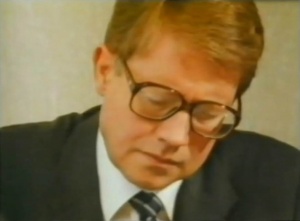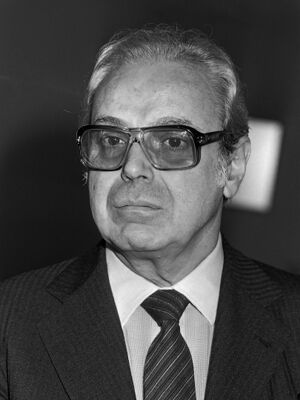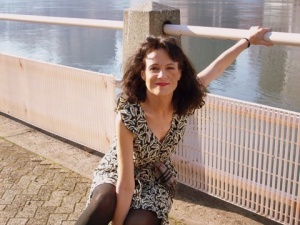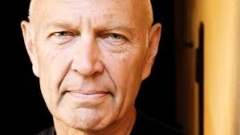Difference between revisions of "The Case of the Disappearing Diamonds"
(→Bankole Timothy: Wikifying) |
|||
| Line 260: | Line 260: | ||
::"That is true." | ::"That is true." | ||
| − | === | + | ===Bankole Timothy=== |
| − | :What do you know about Bankole Timothy, the person [[Bernt Carlsson]] met in secret in London? | + | :What do you know about [[Bankole Timothy]], the person [[Bernt Carlsson]] met in secret in London? |
::"I am very sorry, but I cannot help you with any information about that meeting." | ::"I am very sorry, but I cannot help you with any information about that meeting." | ||
:Why is the subject so sensitive? | :Why is the subject so sensitive? | ||
| Line 267: | Line 267: | ||
:We understand that Bernt was not particularly interested in meeting this person. That he was afraid he might be discredited as a neutral UN official? | :We understand that Bernt was not particularly interested in meeting this person. That he was afraid he might be discredited as a neutral UN official? | ||
::"Obviously, with the kind of work Bernt was engaged in he would meet many people. And of course some people are more interesting to meet than others. But you are forced to. With [[Bernt Carlsson|Bernt]], whatever he considered important to his work, he would go and do. Even if not every time he would jump with joy and shout hooray and think this was the best thing in the world. He was extremely dutiful." | ::"Obviously, with the kind of work Bernt was engaged in he would meet many people. And of course some people are more interesting to meet than others. But you are forced to. With [[Bernt Carlsson|Bernt]], whatever he considered important to his work, he would go and do. Even if not every time he would jump with joy and shout hooray and think this was the best thing in the world. He was extremely dutiful." | ||
| − | :Do you know anything about the position of Bankole Timothy? | + | :Do you know anything about the position of [[Bankole Timothy]]? |
::"I know who he is and what he is doing." | ::"I know who he is and what he is doing." | ||
:How would you describe it? | :How would you describe it? | ||
Revision as of 15:56, 29 March 2015
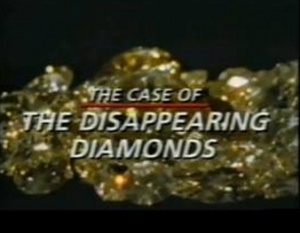
The Case of the Disappearing Diamonds is a Granada TV World In Action documentary film which reported on how billions of pounds-worth of gem diamonds were stripped from South-West Africa (Namibia) over a 20-year period by De Beers, the world's largest diamond mining company. The 30-minute film was broadcast by Thames Television on 28 September 1987.[1] It is available in 4 parts on YouTube: Part 1, Part 2, Part 3, Part 4.
The highest profile victim of Pan Am Flight 103, Assistant Secretary-General of the United Nations and UN Commissioner for Namibia, Bernt Carlsson, was interviewed in Part 3, and threatened to prosecute "all the companies which are carrying out activities in Namibia which have not been authorised by the United Nations."[2]
Contents
- 1 Narrative
- 2 Interviewees
- 3 Thirion Report
- 4 Credits
- 5 Diamonds Are Not Forever
- 6 Carlsson's secret meeting with De Beers
- 6.1 Stressed and nervous before death crash
- 6.2 Meeting the Diamond Cartel
- 6.3 A diamond giant
- 6.4 Forced to travel
- 6.5 Polished Gangsters
- 6.6 Mysterious 'pressuriser'
- 6.7 Aggressive discussions
- 6.8 Climax of his Life
- 6.9 Beware Christmas parcel bombs
- 6.10 The safe was empty
- 6.11 Refusal to comment
- 6.12 The wanted document
- 6.13 New diamond mine
- 6.14 Criticism by Carlsson
- 6.15 Hungry for profit
- 6.16 Change of travel plans
- 6.17 Witness to murder
- 6.18 No theory
- 6.19 Speculations
- 6.20 Bankole Timothy
- 6.21 Many questions
- 7 References
- 8 External links
Narrative
After the First World War, Ernest Oppenheimer held the monopoly over the mining and sale of South West African diamonds, and formed Consolidated Diamond Mines (CDM) which was owned by De Beers. The voice-over narration by John Coates begins:
- Tonight we report on the dark side of the diamond industry. We show how one of the world's richest companies has been stripping one of the world's poorest nations of its main asset - diamonds from this mine. Namibia - a forgotten country long denied its independence. Here for 20 years, South Africa has ignored international law, occupied the land by force and refused to allow the formation of a democratic government. Behind the cover of a military occupation, Namibia has been robbed of its mineral wealth. Here a mining company has leased the world's largest diamond workings, taken £5 billion-worth of gems and paid a rent of £130 per year. At the mouth of the Orange River, an accident of geology and the sands of time has laid down one of nature's rarest gifts to mankind - lonely beaches encrusted with the finest gem diamonds in the world. Released by volcanic activity inland, the diamonds were originally thrown into the Orange River, then over the centuries they were washed downstream and taken to the sea. Incoming tides put the finishing touches bringing the diamonds ashore.
Interviewees
In sequence, the following were interviewed in "The Case of the Disappearing Diamonds":
Martyn Marriott
Described as a Diamond Consultant, Mr Martyn Marriott, stated:
- "It's well known they're the finest diamonds in the world - the highest quality, best colour, lovely diamonds. They are water-worn, thrown up into the beach and a very nice shape. They just happen to be good quality and good colour as well. The diamonds from Namibia are worth an average $200 per carat whereas the diamonds from Zaïre would be worth $8 per carat."
Eric Lang
Businessman Eric Lang said:
- "Successive Administrator-Generals allowed the mining companies to get away with exporting 20-25% of production without any control whatsoever."
Lang threatened to release Namibia's mineral statistics, to which countries they were being sold and at what prices. Lang said he believes that the plunder of his country's resources could lead to another famine in Africa, and that the people of Namibia had lost their equivalent of North Sea Oil - what would have given them a secure future.
- "Namibia's economy is extremely sick - the government consumes 75% of GDP to run the country which, today, is the second most indebted country on the African continent - from a debt-free nation seven years ago. The situation in Namibia could become far more serious than Angola and Mozambique. Without international aid, Namibia could turn into the Ethiopia of Southern Africa."
Gordon Douglas Brown
- Full article: Gordon Douglas Brown
- Full article: Gordon Douglas Brown
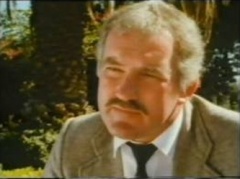
Former CDM manager, Gordon Brown, claimed that for 20 years De Beers had been stripping Namibia of its most precious asset - diamonds at Oranjemund.[3]
- "Overmining took place on the upper terraces and the 'N' blocks [in the upper terraces, blocks K, L, and M were rich in diamonds and the richest of all were the 'N' blocks] which were the series of beaches situated furthest from the sea. That's where the richest blocks were in terms of grade and stone size. There was a central block between the two major beaches that was of lower grade. That was left behind - the company concentrated on taking out the ore reserves furthest from the sea. That's not good mining practice. Proper mining practice calls for the average ore reserve grade and average stone size. I would liken this to a nice big cream cake, with a sponge cake below. Normally you would take out a slice at a time, but in the case of overmining the cream is completely scraped off the top."
John Shaedonhodi
A Namibian and a CDM worker, John Shaedonhodi, said he was concerned that a future independent Namibia would be impoverished.
Bernt Carlsson
- Full article: Bernt Carlsson
- Full article: Bernt Carlsson
The man responsible for Namibia under international law, Assistant Secretary-General of the United Nations and UN Commissioner for Namibia, Bernt Carlsson, was asked about the exploitation of Namibia's diamonds:
- "The corporation has been trying to skim the cream which means they have gone for the large diamonds at the expense of the steady pace. In this way they have really shortened the lifespan of the mines. One would expect from a worldwide corporation like De Beers and Anglo American that they would behave with an element of social and political responsibility. But their behaviour in the specific case of Namibia has been one of profit maximation regardless of its social, economic, political and even legal responsibility."
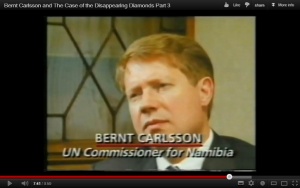
The United Nations Council for Namibia enacted in 1974 a Decree for the Protection of the Natural Resources of Namibia, under which no person or entity could search for, take or distribute any natural resources found in Namibia without the Council's permission. Any person or entity contravening the Decree could be held liable for damages by the future government of an independent Namibia.[4] Companies like De Beers have ignored the law but now attitudes at the UN are beginning to harden:
- "The United Nations this year [1987] in July started legal action against one such company - the Dutch company URENCO which imports uranium."[5]
John Coates: Will you be taking action against other companies such as De Beers?
- Bernt Carlsson: "All the companies which are carrying out activities in Namibia which have not been authorised by the United Nations are being studied at present."
Thirion Report
The documentary referred to a wide-ranging investigation carried out by South African Judge Pieter Willem Thirion in 1982 into political corruption and the divisive tribal structures imposed on Namibia by the apartheid government. Judge Thirion extended his investigation into the behaviour of multinational mining companies in the former German colony and found:
- at one mine 420,000 tonnes of ore were sent out of the country as "geological samples";
- at another, the state leased the mining rights to a businessman at £1,500 per year, who then reassigned them for an income of £650,000 per year;
- at the British owned Tsumeb mine, lead and copper were exported with undisclosed amounts of gold and silver;
- and the British South-West Africa Company exported £7 million-worth of minerals without paying tax.
Judge Thirion focused upon the stewardship of the nation's principal economic resource - gem diamonds of the Atlantic beaches north of the Orange River. The Thirion Report's main findings were:
- There were no meaningful controls over Namibia's most important industry;
- The premises of the supposedly independent Diamond Board for South-West Africa were provided by De Beers;
- All of the Board's agents were De Beers' employees;
- The entire costs of running the Board were met by De Beers as a tax deductible expense;
- Stanley Jackson, the Diamond Board Secretary, was also Secretary to Consolidated Diamond Mines.
The 350-page report found that De Beers had overmined the diamond reserves ahead of Namibia's independence: The excessive depletion of the deposit was a preferential depletion of the more valuable deposits to the detriment of the low grade deposits, and therefore a breach of the provisions of Clause 3 of the Halbscheid Agreement. The probabilities are that the effect of the excessive depletion of the deposit will be to shorten the life of the mine and to detrimentally affect its profitability towards the end of its life.[6]
Credits
- Camera: Howard Somers;
- Sound: David Woods;
- Film Editors: Oral Ottey, John Rutherford;
- Dubbing Mixer: John Whitworth;
- Production Assistants: Adele McLoughlin, Judith Fraser;
- Investigation by: Laurie Flynn and John Coates;
- Editor: Stuart Prebble;
- Executive Producer: Ray Fitzwalter;
- Granada Television 1987.
Diamonds Are Not Forever
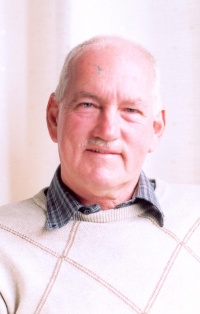
One month after "The Case of the Disappearing Diamonds" was broadcast on British television, former Consolidated Diamond Mines manager, Gordon Brown, who was interviewed in the film, wrote from Cape Town to Bernt Carlsson in New York offering his expert assistance in building the prosecution case against De Beers for overmining Namibia's diamond gemstones. In his letter, Gordon Brown had calculated the quantum and value of diamonds illegally removed from Namibia from 1967, when South-West Africa became the responsibility of the United Nations, until the territory was likely to become independent in 1989/90. By which time, De Beers/Anglo American and the Apartheid State would have illegally removed:
- 44 million Diamonds, weighing
- 33 million Carats, with an average diamond size of
- 0.75 Carats per Diamond.
In 2010, Gordon Brown estimated the current value of those illegally removed diamonds amounted to:
- £11.0 billion, ($18.7bn) being Revenue from Diamond Sales (Standard Selling Value)
- £ 3.3 billion, ($ 5.6bn) spent on Working Costs and Capital Expenditure, leaving
- £ 7.7 billion, ($13.1bn) of Working Profit, distributed as follows:
- £ 4.4 billion, ($ 7.5bn) as De Beers/Anglo American’s Profit Share, and
- £ 3.3 billion, ($ 5.6bn) as Apartheid State’s Profit Share through Taxes, Royalties, etc.
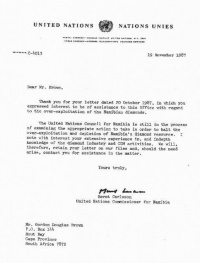
Bernt Carlsson replied by letter dated 19 November 1987:
- Reference: C-4013
- Dear Mr Brown,
- Thank you for your letter dated 20 October 1987, in which you expressed interest to be of assistance to this Office with regard to the over-exploitation of the Namibian diamonds.
- The United Nations Council for Namibia is still in the process of examining the appropriate action to take in order to halt the over-exploitation and depletion of Namibia's diamond resource. I note with interest your extensive experience in and in-depth knowledge of the diamond industry and CDM activities. We will, therefore, retain your letter on our files and, should the need arise, contact you for assistance in the matter.
- Yours truly,
- Bernt Carlsson
- United Nations Commissioner for Namibia
Carlsson's secret meeting with De Beers
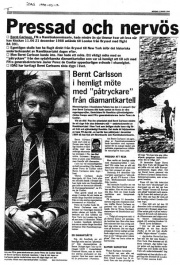
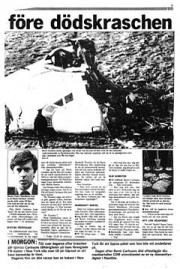
In December 1988, former Labour MEP Michael McGowan, as President of the Development Committee of the European Parliament, had invited Bernt Carlsson, the Assistant Secretary-General of the United Nations and UN Commissioner for Namibia, to call in at Brussels. Bernt Carlsson was on his way back to the United States from Namibia and agreed to address members of the Development Committee. On 20 December 1988, at the European Parliament, Carlsson spoke about his hopes for an independent Namibia and the end of apartheid in South Africa to a packed meeting of MEPs.[7]
Instead of returning directly to New York after the speech, Bernt Carlsson flew to London on 21 December 1988.
Jan-Olof Bengtsson, the political editor of Kvällsposten newspaper in Malmö, Sweden, explained Bernt Carlsson's change of itinerary in a series of three articles in Sweden's iDAG newspaper on 12, 13 and 14 March 1990. Never published in the English language, these iDAG articles revealed that Commissioner Carlsson's arm had been twisted by the diamond mining giant De Beers into making a stopover in London for a secret meeting and into joining the doomed Pan Am Flight 103 at Heathrow, rather than taking as he had intended a Sabena flight direct from Brussels to New York.[8]
Stressed and nervous before death crash
- "Pressad och nervös före dödskraschen"
- Bernt Carlsson, UN Commissioner for Namibia, had less than seven hours to live when at 11.06am on 21 December 1988 he arrived in London on flight BA 391.
- Strictly speaking he was meant to fly directly from Brussels to New York in time for the historic signing of the Namibia Independence Agreement the day after. But Bernt Carlsson could not make it. He had a meeting. An important meeting with a "pressuriser" from the South African diamond cartel, which was so secret that evidently not even Javier Pérez de Cuéllar, UN Secretary-General, knew anything about it. Here iDAG maps out the last 24 hours in the life of Bernt Carlsson.
Meeting the Diamond Cartel
- The memorial service in the Folkets Hus in Stockholm on 11 January 1989 for Bernt Carlsson gathered most of our Heads of Government, representatives of the Namibia independence movement SWAPO and Javier Pérez de Cuéllar, the UN Secretary-General.
- When he died in the Pan Am bombing, Bernt Carlsson was less than 24 hours away from the fulfillment of his dreams - the signing of the Namibia agreement in New York which would finally pave the way to a free and independent Namibia. This was supposed to be the climax of his career with the UN, a career that began in December 1986 when he was appointed Commissioner for Namibia. Bernt Carlsson had great support from SWAPO but much less so from South Africa because of that country's substantial economic interests in Namibia: an interest in gold, uranium but above all in diamonds.
- Javier Pérez de Cuéllar in his speech at the memorial ceremony on a cold day in January last year [1989] described the last 24 hours in the life of Bernt Carlsson:
- "Bernt Carlsson was returning to New York following an official visit to Brussels where he had spoken to a Committee within the European Parliament about the Namibia agreement," Pérez de Cuéllar began. "He stopped briefly in London to honour a long-standing invitation by a non-governmental organisation with interests in Namibia."
- Pérez de Cuéllar was wrong. True, Bernt Carlsson's trip to Brussels had been planned almost six months earlier. But his decision to return to New York via London was only made on 16 December 1988. The meeting in London was definitely not a long-standing invitation by Namibia sympathisers.
A diamond giant
- This was about a secret meeting with a "pressuriser" from De Beers, the giant diamond company. This company in turn owns Consolidated Diamond Mines (CDM), the world's largest producer of diamonds which have been produced for more than 60 years in Namibia. It goes without saying that Bernt Carlsson in his capacity of Commissioner for Namibia had contacts with representatives of a great number of countries and political organisations as part of his job.
Forced to travel
- But why a secret meeting with the diamond cartel in London? A meeting which to all intents and purposes he did not want to have but was forced to. On around 8 or 9 December, Carlsson receives a telephone call from the "pressuriser" at his United Nations office in New York. The telephone call is from London. We do not know what the telephone call was about. However, Bernt Carlsson is unsure. He does not know whether to act or not. As if going might put him in a compromising position. On the morning of 16 December, the day on which the travel arrangements are changed, Bernt Carlsson meets up with an old friend who has come to see him. He is Weine Karlsson, head of department at Stockholm University:
- "In the early morning we sat talking in Bernt's office," he explains. "But after only a few minutes he became uneasy and asked me to go and wait in another room of the office. He had something urgent to deal with. It is possible that it had something to do with the trip. He said that 'important business needs to be done'. He was away for about half an hour."
Polished Gangsters
- Weine Karlsson continues his story:
- "We all know that Bernt was very unobtrusive. Shy almost. Only, now and again he exploded. As when suddenly he said to me, 'You've got no idea what polished gangsters (South Africans) we are dealing with here'."
- On 19 December, Bernt leaves New York for Brussels to make his speech in the European Parliament the next day. The visit was arranged by David Lowe, now with the Socialist International. Right up to this interview, he has felt 'guilt-ridden' and convinced that it was he who 'enticed' Carlsson to go to Europe and therefore is 'indirectly responsible for his death on the plane'. But when Lowe learns about the secret meeting in London, he is calm again.
- "He made his speech on 20 December, before the Development Committee in Brussels," Lowe says. "After the meeting we went to a restaurant for lunch and discussions with some other friends. Our discussions continued until about 3pm." David Lowe continues: "It was at this point that Bernt suddenly said that he had to check out as he had to meet 'some friends' in London. I thought to myself, Good Lord, he has all this going on in New York. He will be even more tired than he is already. I remember thinking he was mad and why not go directly to New York for the signing of the agreement? I gathered he would catch a flight from Brussels to London at about 5pm that evening."
- However, Bernt Carlsson had 'lied' to his friend David Lowe. He stayed in Brussels that afternoon and only arrived in London the day after - on 21 December.
Mysterious 'pressuriser'
- When we telephoned his old colleagues at the Namibia office, not one of them wished to talk about the meeting with the mysterious 'pressuriser' from the diamond cartel:
- "All I know is that Bernt Carlsson was travelling to London to meet representatives of an NGO (in this case organisations friendly towards Namibia)," says Malthi Ranin who was his secretary at the time.
- iDAG has a copy of a private memorandum which says something completely different. This is a memorandum to Bernt Carlsson from his own office:
- "Mr Timothy says he will be waiting for you as soon as you get through the tunnel. Your meeting will finish in time for your next arrangement at 2pm. He will also provide a car to take you round."
- 'Mr Timothy'? His full name is Bankole Timothy. Not much known about him. Just another name working for the diamond cartel. But one who does know something about him is Randolph Vigne, secretary of the Namibia support committee:
- "Bankole Timothy worked for the PR department at De Beers for 15 to 20 years. I understand they pensioned him off but called him back when the independence of Namibia suddenly started accelerating. They probably felt they needed someone like him with contacts." Vigne continues: "I don't think he works for them any more. I believe he had a temporary assignment which is now completed."
- Was Bernt Carlsson that temporary assignment?
Aggressive discussions
- iDAG managed to track down Bankole Timothy. But the telephone conversation was brief. And aggressive: "Could you tell me what you and Bernt Carlsson talked about when you met in London on 21 December 1988?" He replied:
- "I am sorry. I am very, very sorry but I have nothing to say about it." You do not want.....(we are interrupted). "Do not disturb me any more. I am going out. I don't know how you got my number. I'm going out and you start asking questions about....."
- You met Bernt Carlsson on the morning of 21 December and.....(we are interrupted)
- "Don't disturb me anymore. What are you on about? (screams) I don't know who you are. And you want to interview me on the phone. I have no comments to make!"
- At about 5.30pm on 21 December 1988 the telephone rings in the home of Pentti Väänäänen, then Secretary-General of the Socialist International, and an old friend of Bernt:
- "It was Bernt calling from the airport just before he boarded Pan Am 103," he says. "We exchanged Christmas greetings and talked a little about the Namibia agreement."
- Did he tell you who he had seen in London?
- "No".
- How would you describe his frame of mind?
- "If you want me to tell you in just a few words, he sounded nervous," he replied.
Climax of his Life
- Nervous? Why? Bernt Carlsson was close to the climax of his life with the Namibia agreement the next day. He should have been happy and optimistic. But why nervous?
- PICTURE CAPTIONS (page one of article): Not even Javier Perez de Cuellar, UN Secretary-General, knew about Bernt Carlsson's new travel arrangements. Today, not one of Carlsson's old colleagues wants to say anything about the mysterious meeting with the diamond cartel in London. (page two of the article-large picture): Bernt Carlsson should have travelled directly from Brussels to New York for the historic signing of the Namibia agreement. Instead, he altered his travel arrangements and became one of the passengers who died on the Pan Am flight. (Picture left-hand side): His friend, Pentti Väänäänen, thought that Bernt Carlsson seemed nervous before his trip to New York, despite approaching the climax of his life. (Right-hand picture): Bernt Carlsson had a secret meeting in London with the world's largest producer of diamonds. It would seem that he was coerced into it.
- TOMORROW: When, in the days following the crash, Carlsson's belongings are checked in his sealed UN office in New York, people find to their amazement that his safe is empty. In the days before his death he warns a friend in New York not to open a parcel by sender unknown. The day after Bernt Carlsson's death, CDM, the diamond producer, publishes the discovery of a new diamond mine in Namibia.
Beware Christmas parcel bombs
The second iDAG article about Bernt Carlsson was published on 13 March 1990:
The safe was empty
- "Kassaskåpet var tomt"
- When Bernt Carlsson's safe was opened six days after the Pan Am explosion, those present had a minor shock: the safe was empty! Despite the fact that the office had been sealed already on 21 December 1988, and his private apartment the day after, by the UN's own security staff. The opening was witnessed by, among others, Bernt Carlsson's girl friend Sanya Popovic, his sister Inger Carlsson-Musser and Embassy Counsellor Stefan Noréen of the Swedish Delegation at the UN. In the days immediately before Bernt Carlsson made the trip to his secret meeting in London, which we wrote about yesterday, he was very uneasy.
- According to Sanya Popovic
- "December was like clouded in a nightmare. He became increasingly nervous. He said that if I received a parcel I was not to open it under any circumstances. This was on 17 December. He said that people usually start getting parcels at this time, it being Christmas. But unless I knew who sent it, I was not to open it."
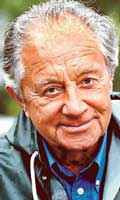
- On 22 December - the day after the Pan Am bombing - Bernt Carlsson's apartment was sealed off. ::"The lock was changed," says Sanya Popovic. "I was given one key, and the UN security department had another. I was told that sealing off everything could take a long time pending the analysis. I therefore ensured that all windows were properly locked, all lights switched off, etc. A few days later, however, a friend and I passed by the apartment in a taxi. The apartment is easy to recognise from the outside: front view, third floor and five windows. My friend pointed out that the lights were on. So I got out and walked back. I found that some lights were switched on but there was no-one there." Sanya Popovic continues: "If there was anything of interest in the apartment, someone else got to it first."
- On the evening of the disaster, the Swedish foreign minister, Sten Andersson, telephoned Bernt Carlsson's sister Inger Carlsson-Musser, who had lived in the US for almost 20 years, to give his commiserations. On 28 December 1988 Inger Carlsson-Musser travelled to New York to go through Bernt Carlsson's belongings in his UN office. This was the office which had been sealed off since the day of the accident. She asked Sanya Popovic and the Embassy Counsellor Stefan Noréen to help. We understand that his safe was empty. What can you say about that?
- "Yes, it was empty," says Sanya Popovic. "And this was very unlike Bernt who was very security-conscious and kept all his documents under lock and key. But above all the office was sealed off. No-one should have been able to get in."
Refusal to comment
- Embassy Counsellor Stefan Noréen:
- "I was assisting Inger Carlsson-Musser in taking charge of her brother's personal belongings in the office. Nothing else happened there." Can you confirm that the safe was empty when it was opened? "I refuse to comment," Noréen replied. Is it true or not? "I refuse to comment. I was there. But I do not want to talk about what exactly happened. If anyone should comment surely they should be Bernt Carlsson's family."
- iDAG tried to contact Inger Carlsson-Musser, but without success. We would have asked her about the empty safe. Also, to explain information from foreign investigative journalists who claimed that foreign minister, Sten Andersson, had asked her to keep an eye out for a specific document which was supposed to be held in the safe.
The wanted document
- We have not obtained any comments from Sten Andersson either. We did, however, speak to his private secretary, Pierre Schori, who used to be a close friend of Bernt Carlsson.
- During a secret meeting in London, Bernt Carlsson met a person called Bankole Timothy. Do you know him?
- "No, I know of no-one of that name."
- He represents the diamond cartel.
- "The diamond cartel," queries Pierre Schori, almost laughing. "I know nothing about that."
- We know that Sten Andersson telephoned Bernt's sister Inger Carlsson-Musser in the USA.
- "Naturally."
- We are informed by foreign journalists that Sten Andersson was looking for some documents which Bernt's sister Inger was supposed to be able to help in finding, and which were kept in Bernt's safe.
- "This is nonsense, as far as I'm concerned. What's this all about?"
- We understand that the safe was empty when it was opened.
- "I know nothing about that. I don't understand a word. All I can say is that it is nonsense to claim that Sten Andersson should have done this or that."
- Sten Andersson is difficult to get hold of. Perhaps we should ask him?
- "I know this is all nonsense. I think you're on the wrong track," Schori replied.
New diamond mine
- On 22 December, the day after the Pan Am bombing, it was announced by Consolidated Diamond Mines, wholly-owned by De Beers, that $36m is being invested in new diamond production in Namibia. This will be done in Auchas, 45km from Oranjemund. It is estimated that the annual yield of diamonds over a ten-year period will amount to roughly the equivalent of 50 million Swedish Krona (SEK). The announcement is mentioned in a 'country report' about Namibia which was issued last year [1989] and published by the Economist Intelligence Unit. The report says, inter alia:
- "The company made their announcement on 22 December 1988, which was also the date that the Namibia agreement was signed." :This is brushed aside as pure coincidence by De Beers representatives in London.
Criticism by Carlsson
- Bernt Carlsson, as the intended UN Commissioner for Namibia, rarely spoke about the enormous diamond assets in the country and the multi-national companies exploiting the finds. There is, however, one exception. He was interviewed for a British TV documentary entitled 'Case of the Disappearing Diamonds' by Granada which was broadcast early in December 1988. In the programme, Bernt Carlsson speaks about the ruthless exploitation taking place in the diamond business:
- "The business has tried to pick the raisin from the cake. This means that they have been after the large diamonds instead of calm but constant development. The way they are doing it will endanger the survival of the mines."
Hungry for profit
- Carlsson continues:
- "One would expect from a worldwide organisation like De Beers to behave in a socially and financially responsible manner. However, as far as Namibia is concerned, they have only been interested in the maximum profit without regard to social, economic-political or even legal considerations."
- On 16 March 1989 De Beers announced yet another diamond find in Namibia. This time it is a mine in Elizabeth Bay from which over the next ten years SEK300m-worth of diamonds are expected to be dug up. This particular find appears to delight the mysterious Bankole Timothy and, unusually, he himself issues the press release to the surprised public.
- PICTURE CAPTIONS (page 1 of article - picture 1) Sanya Popovic was present when the safe was opened and discovered to be empty. Bernt was very security-conscious and kept all his documents under lock and key. (picture 2) This is Carlsson's home in New York. The apartment was sealed off after the death crash. Carlsson's girlfriend later determined that someone had entered the apartment. (page 2 - picture 1) iDAG could reveal yesterday that Carlsson met representatives of a diamond cartel with interests in Namibia during a secret meeting in London. (picture 2) Bernt Carlsson felt very uneasy. He warned his girlfriend about opening parcels from senders unknown.
- TOMORROW: "I cannot say that I can explain why Bernt changed his travel arrangements. Bernt took the only explanation with him", says a very close friend for many years. This friend always walked close to Bernt Carlsson, and yet stayed away from the public eye.
Change of travel plans
- This is the third and final part of Sweden's iDAG newspaper reportage by Jan-Olof Bengtsson on 14 March 1990 "Han tog Svaren på Frågorna med Sig":
- Her name is Meta Johansson, and she is a close friend of Bernt Carlsson for many years. A close friend who was always there but far from the limelight and all the scrutiny. iDAG spoke to her.
- Bernt Carlsson in his many years as an international worker for solidarity experienced a great deal of misery, a lot of drama and many weird and wonderful cases. But he carried on regardless and worked for what he believed in. In a discreet, almost shy, manner. Always determinedly and in a very competent way.
Witness to murder
- On 10 April 1983, Bernt Carlsson who was Secretary-General of the Socialist International (SI) at the time, was an eye witness to the fatal shooting of the moderate Palestinian Issam Sartawi in the lobby of Hotel Montochero in Albufeira, Portugal. The terrorist, Abu Nidal, claimed responsibility for the killing. Because of his job as SI Secretary-General, his apartment in London at the time was subject to a number of break-ins while he was overseas.
- These are some examples of the security measures taken by Bernt: When they opened Bernt's safe in his New York office, it was found to be empty.
- "Yes, so I heard," replies Meta Johansson.
- Isn't that strange?
- "Yes, clearly this is very strange. But I do not know the rules of the game in cases such as this."
No theory
- She continues:
- "I have helped his family go through all the papers and documents which we found in his apartment in the US. Neither the family nor I have found any papers linked to the accident."
- Do you have any theory as to why the safe was empty?
- "I have no theory. Nor do I know who had access to the safe. Bernt's sister Inger does not know either."
- Do you know anything about what Sten Andersson spoke to the sister, Inger Carlsson-Musser, about?
- "No, as I was not there, I cannot know what he asked her to do. And I was not present when the safe was opened. So I'm sure you will understand that I cannot comment on this."
Speculations
- Meta Johansson continues:
- "If I may say so without being misunderstood, I have had so many speculations in my head that I doubt if there can be any more. Some more constructive than others."
- Bernt was very security-conscious, isn't that right?
- "Yes, very much so. But being security-conscious also meant that he carried important documents with him in his hand luggage. There were documents that he would want to take personal care of."
- But the safe was completely empty. Also of 'unimportant documents'?
- "That is true."
Bankole Timothy
- What do you know about Bankole Timothy, the person Bernt Carlsson met in secret in London?
- "I am very sorry, but I cannot help you with any information about that meeting."
- Why is the subject so sensitive?
- "I don't think it's sensitive. I just feel the people involved with the matter should speak."
- We understand that Bernt was not particularly interested in meeting this person. That he was afraid he might be discredited as a neutral UN official?
- "Obviously, with the kind of work Bernt was engaged in he would meet many people. And of course some people are more interesting to meet than others. But you are forced to. With Bernt, whatever he considered important to his work, he would go and do. Even if not every time he would jump with joy and shout hooray and think this was the best thing in the world. He was extremely dutiful."
- Do you know anything about the position of Bankole Timothy?
- "I know who he is and what he is doing."
- How would you describe it?
- "No, I do not want to."
- How would you explain why Bernt changed his travel arrangements at the 11th hour? His intermediate landing in London for this meeting before he returned to New York?
- "I cannot say that I can explain the change in travel arrangements. Bernt took the only explanation with him. You can speak to a lot of people. But only a few are likely to know why Bernt changed his mind."
Many questions
- iDAG does not wish to claim with these articles that Bernt Carlsson was the target of the bomb which blasted Pan Am 103 from the air and in which he was one of the 259 victims. We have no basis to make such a claim. We have only wanted to point out what seems to be a number of curious circumstances and that maybe no-one will ever have the full answers to the questions. What forced Bernt Carlsson to fly to the secret meeting in London and which was against his will? Why does Bankole Timothy refuse to say what the meeting was about, but gets aggressive when he is asked?
- Why was Bernt Carlsson's safe in New York empty when it was opened on 28 December 1988? The questions are many, but the answers are few.
- PICTURE CAPTIONS (top) iDAG has in a series of articles revealed a number of fascinating facts linked to Bernt Carlsson and the Lockerbie disaster. (in main text) The Swedish diplomat and UN Commissioner for Namibia, Bernt Carlsson, was killed on 21 December 1988 when a Pan Am flight on its way to New York crashed at Lockerbie in Scotland.
References
- ↑ "The Case of the Disappearing Diamonds" World In Action documentary film, 28 September 1987
- ↑ "Bernt Carlsson and The Case of the Disappearing Diamonds, Part 3"
- ↑ "The Dossier"
- ↑ "Historical background - UNCN"
- ↑ "Council for Namibia sues Netherlands over Namibia's natural resources"
- ↑ "The Thirion Report"
- ↑ "The best tribute to the 270 victims of Lockerbie is to find out the truth"
- ↑ "Lockerbie: Bernt Carlsson's secret meeting in London"
